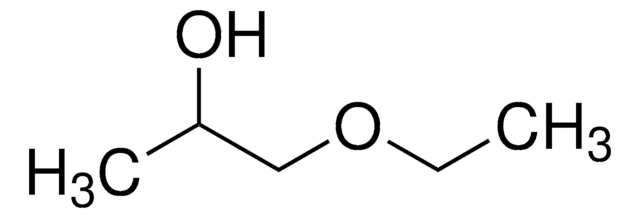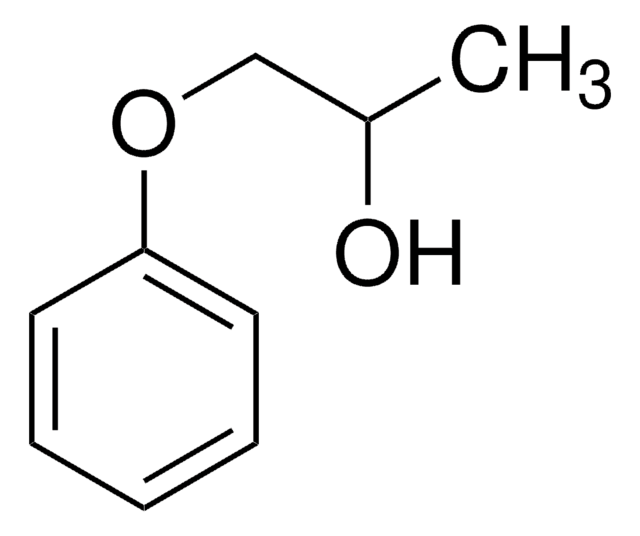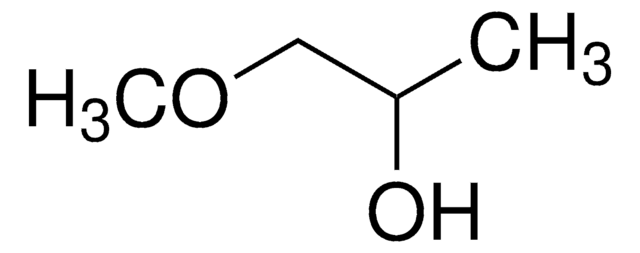Wichtige Dokumente
537675
2-Propyloxy-ethanol
ReagentPlus®, ≥99.40%
Synonym(e):
Ethylenglycolmonopropylether, Propyl-Cellosolve
About This Item
Empfohlene Produkte
Qualität
reagent
Dampfdruck
1.3 mmHg ( 20 °C)
Produktlinie
ReagentPlus®
Assay
≥99.40%
Form
liquid
dilution
(for general lab use)
Verunreinigungen
≤0.100% (water)
Brechungsindex
n20/D 1.413 (lit.)
bp
150-153 °C (lit.)
mp (Schmelzpunkt)
−75 °C (lit.)
Dichte
0.913 g/mL at 25 °C (lit.)
SMILES String
CCCOCCO
InChI
1S/C5H12O2/c1-2-4-7-5-3-6/h6H,2-5H2,1H3
InChIKey
YEYKMVJDLWJFOA-UHFFFAOYSA-N
Suchen Sie nach ähnlichen Produkten? Aufrufen Leitfaden zum Produktvergleich
Allgemeine Beschreibung
Rechtliche Hinweise
Signalwort
Warning
H-Sätze
Gefahreneinstufungen
Acute Tox. 4 Dermal - Eye Irrit. 2 - Flam. Liq. 3
Lagerklassenschlüssel
3 - Flammable liquids
WGK
WGK 1
Flammpunkt (°F)
118.4 °F - closed cup
Flammpunkt (°C)
48 °C - closed cup
Hier finden Sie alle aktuellen Versionen:
Besitzen Sie dieses Produkt bereits?
In der Dokumentenbibliothek finden Sie die Dokumentation zu den Produkten, die Sie kürzlich erworben haben.
Kunden haben sich ebenfalls angesehen
Unser Team von Wissenschaftlern verfügt über Erfahrung in allen Forschungsbereichen einschließlich Life Science, Materialwissenschaften, chemischer Synthese, Chromatographie, Analytik und vielen mehr..
Setzen Sie sich mit dem technischen Dienst in Verbindung.














